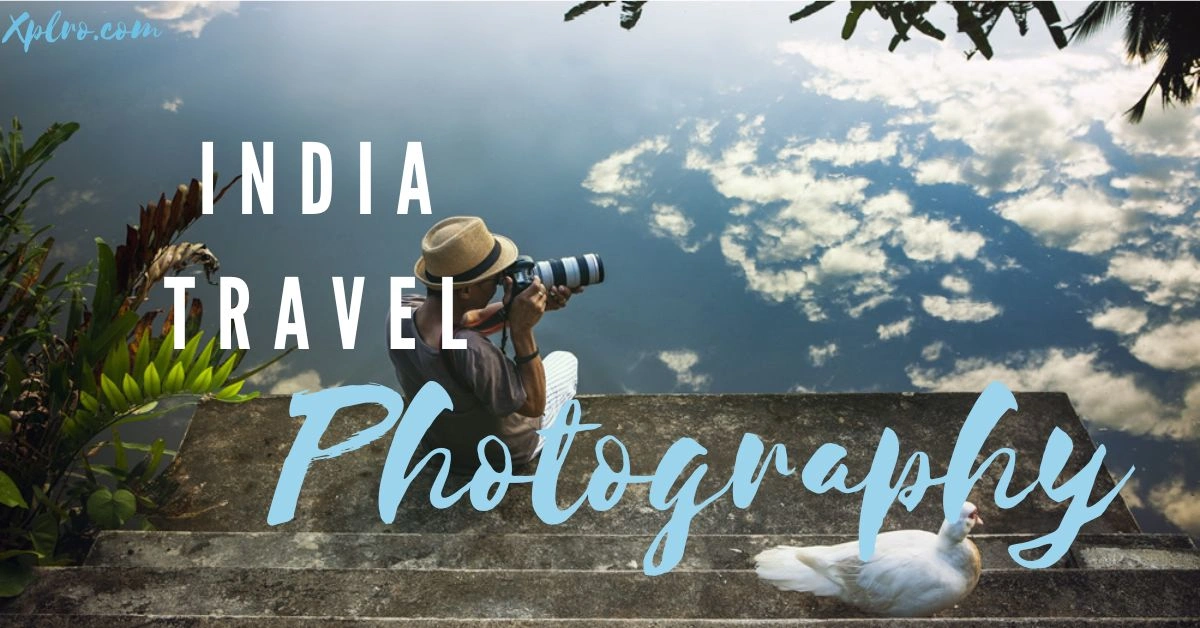India, with its vibrant colors, diverse landscapes, and rich cultural heritage, is an India travel photography’s paradise. To capture the essence of this incredible country, embrace the chaos, seek unique perspectives, capture the people, experiment with color and light, and explore the architecture and landscapes. Don’t forget to capture the festivals, use a tripod for stability, learn basic Hindi, be patient and respectful, experiment with different lenses, use a polarizing filter, edit your photos carefully, and most importantly, have fun. By following these tips, you’ll be able to capture stunning images that truly capture the beauty and spirit of India.
- 1. Research and Plan Your Shots
- 2. Use the Golden and Blue Hours
- 3. Embrace the Vibrant Colors
- 4. Focus on Composition
- 5. Experiment with Different Angles
- 6. Capture the Local Culture
- 7. Utilize Natural and Artificial Light
- 8. Include Iconic Landmarks
- 9. Pay Attention to Details
- 10. Use a Tripod for Stability
- 11. Incorporate Local Wildlife
- 12. Edit with Care
- 13. Capture the Spirit of India’s Festivals
- 14. Stay Safe and Respectful
- 15. Practice Patience
- FAQs
1. Research and Plan Your Shots
- Understand Your Destination: Research the locations you plan to visit. Learn about the best times to photograph specific sites and the cultural norms of the areas.
- Scout Locations: Use online resources, maps, and travel guides to find the most photogenic spots. Plan your itinerary around these locations to maximize your photo opportunities.
2. Use the Golden and Blue Hours
- Golden Hour: This refers to the period shortly after sunrise and before sunset when the light is soft and golden. It enhances the colors and textures of your photos, adding a magical touch.
- Blue Hour: This occurs just before sunrise and after sunset when the sky takes on a deep blue hue. It’s perfect for capturing atmospheric shots of cityscapes and landscapes.
3. Embrace the Vibrant Colors
- Capture India’s Color Palette: India is known for its vivid colors, from the colorful saris worn by locals to the vibrant hues of its festivals. Use these colors to add depth and interest to your travel photos.
- Contrast and Saturation: Adjust the contrast and saturation in your editing software to make the colors pop, while maintaining a natural look.
4. Focus on Composition
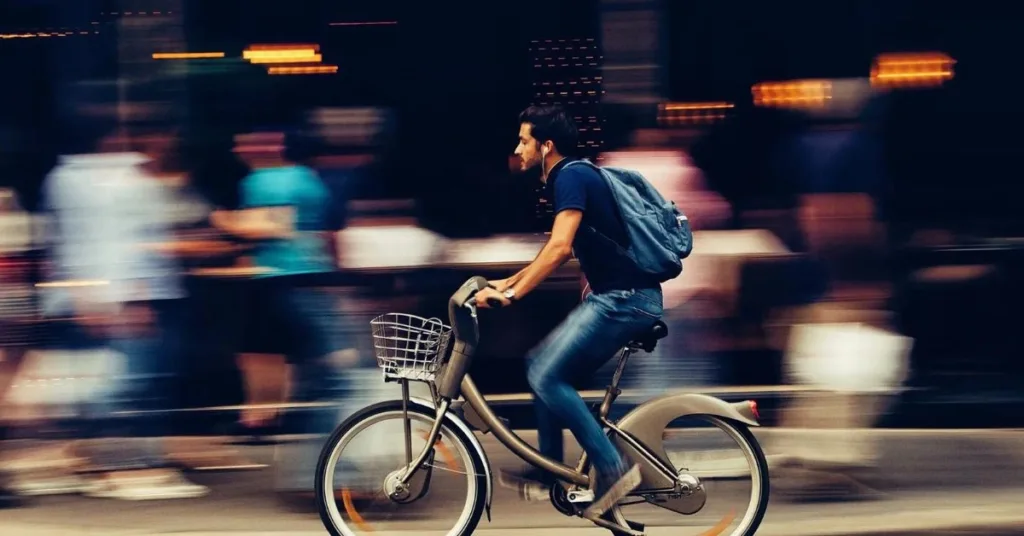
- Rule of Thirds: Use the rule of thirds to create balanced and engaging photos. Place your main subject off-center to draw attention and create visual interest.
- Leading Lines: Use natural lines, such as roads, rivers, or architectural features, to lead the viewer’s eye through the image and emphasize the subject.
5. Experiment with Different Angles
- Get Creative with Perspectives: Don’t settle for standard shots. Try photographing from different angles, such as low or high perspectives, to provide a fresh view of your subject.
- Reflective Surfaces: Utilize reflective surfaces like water bodies or glass to create interesting and unique compositions.
6. Capture the Local Culture
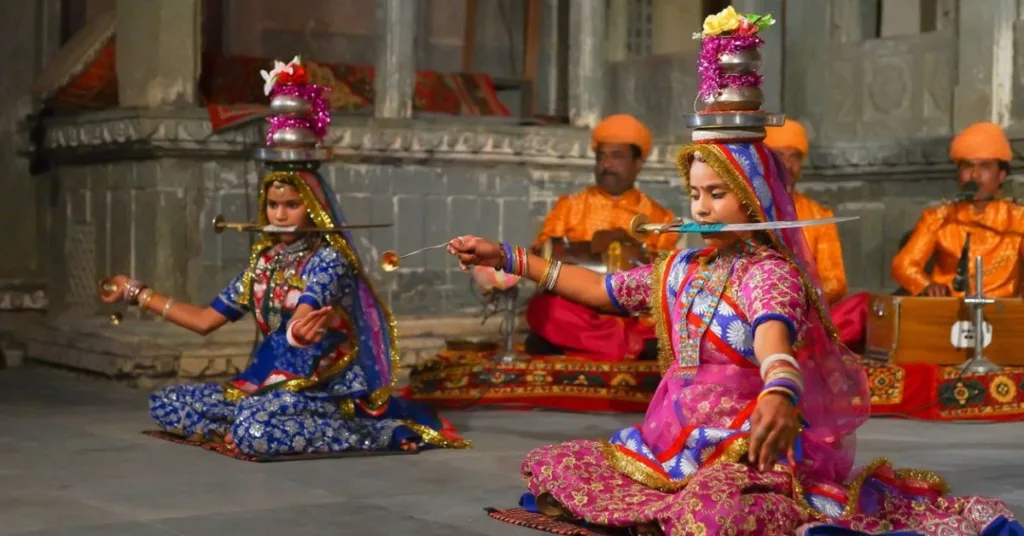
- Portraits of Locals: Photographing local people can add a personal touch to your travel photos. Always ask for permission before taking portraits and be respectful of cultural sensitivities.
- Festivals and Events: Capture vibrant festivals and local events to showcase the cultural richness of India. Be prepared for crowds and plan your shots to include dynamic elements.
7. Utilize Natural and Artificial Light
- Natural Light: Make the most of natural light, especially during early mornings and late afternoons. Avoid harsh midday sunlight that can create unflattering shadows.
- Artificial Light: In indoor or low-light situations, use artificial lighting creatively. Experiment with lamps, candles, or street lights to add warmth and mood to your photos.
8. Include Iconic Landmarks
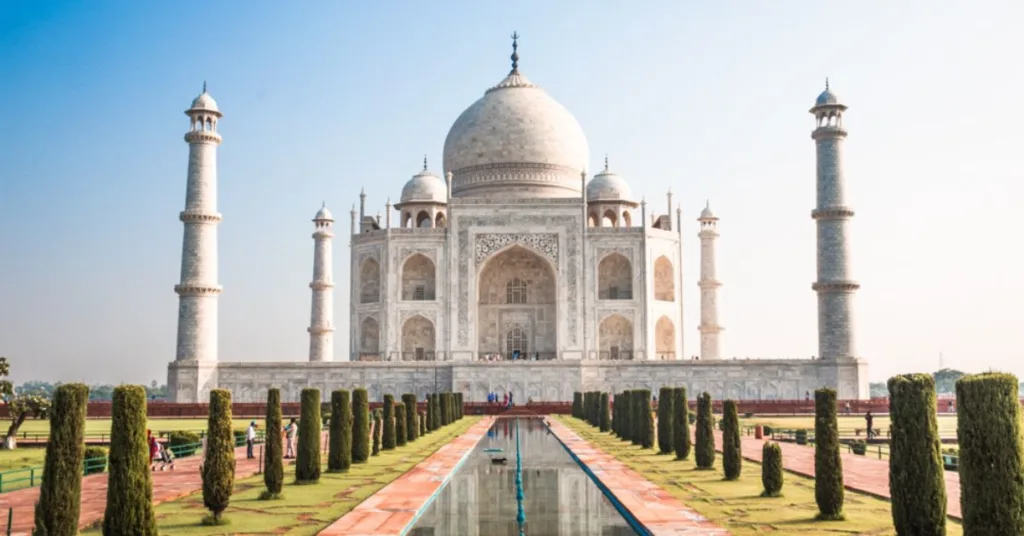
- Showcase Famous Sites: Capture well-known landmarks like the Taj Mahal, Jaipur’s forts, or Mumbai’s Gateway of India. Ensure these landmarks are well-composed within your shots to highlight their grandeur.
- Unique Perspectives: Look for unique angles or lesser-known viewpoints to present these landmarks in a fresh way.
9. Pay Attention to Details
- Close-Ups and Textures: Capture the intricate details and textures of local crafts, architecture, and natural elements. Close-up shots can reveal the beauty and craftsmanship often missed in wide-angle shots.
- Patterns and Symmetry: Look for patterns and symmetrical designs in your surroundings, from traditional textiles to architectural elements, to create visually compelling images.
10. Use a Tripod for Stability
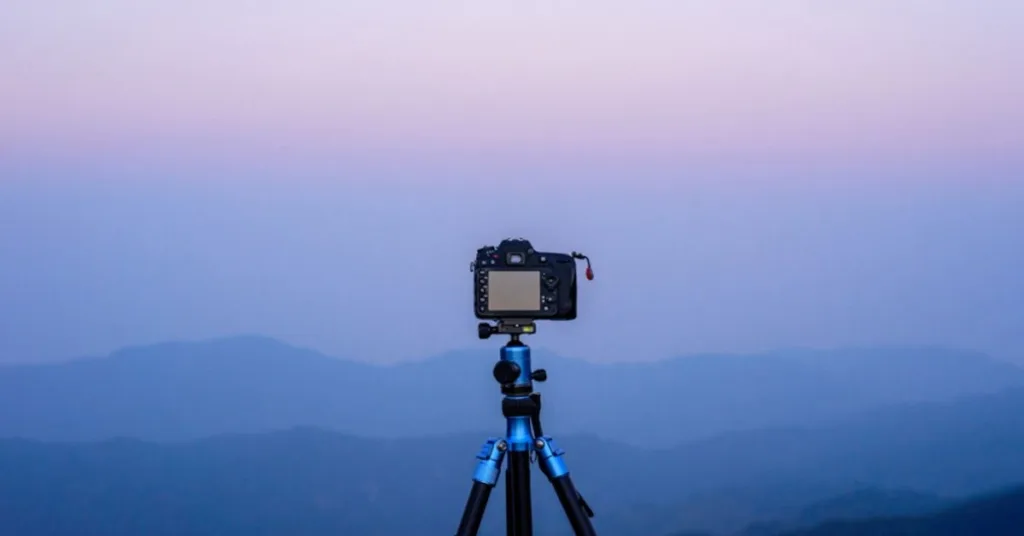
- Use a Tripod: A tripod is essential for capturing sharp images, especially in low light or when using long exposures. It also helps in creating consistent shots for panoramas or time-lapses.
- Avoid Camera Shake: Even with good stabilization, avoid touching the camera or lens during the shot to prevent blurring.
11. Incorporate Local Wildlife
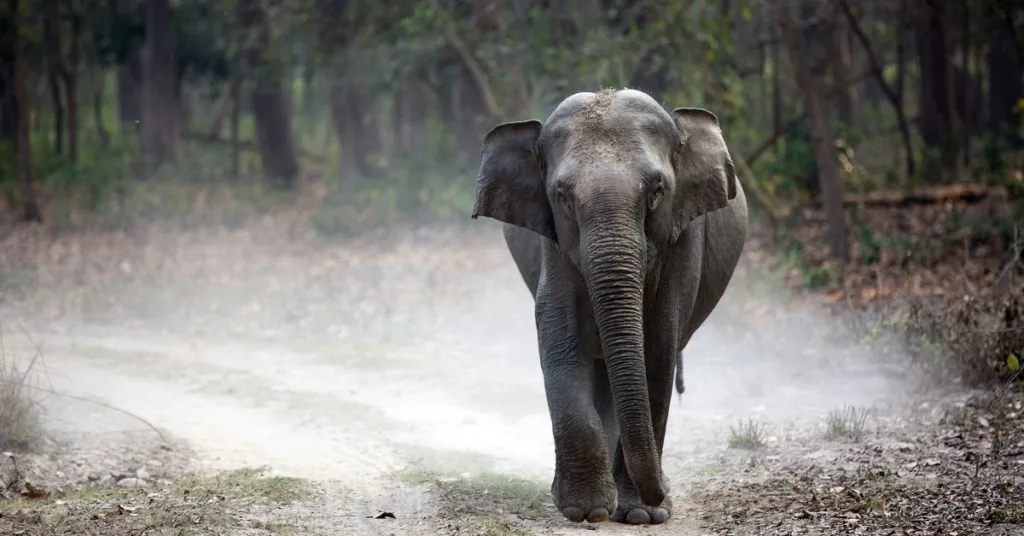
- Wildlife Photography: India is home to diverse wildlife, from tigers in national parks to birds and insects. Respect wildlife and maintain a safe distance while capturing their natural behaviors.
- Early Mornings: Wildlife is often more active during early mornings, so plan your shoots accordingly to catch animals in their natural habitat.
12. Edit with Care
- Use Photo Editing Software: Enhance your images, correct exposure, and adjust colors using photo editing software. Be careful not to over-edit; aim for a natural look that reflects the true essence of the scene.
- Enhance Details: Sharpen details and reduce noise, but ensure the final image maintains a realistic appearance.
13. Capture the Spirit of India’s Festivals
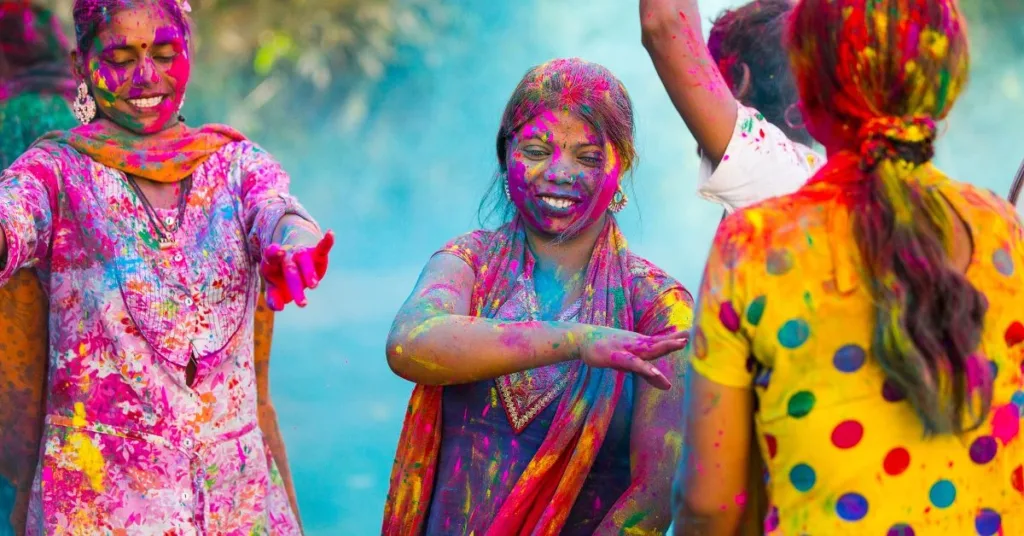
- Vibrant Celebrations: India’s festivals are colorful and dynamic, offering great opportunities for capturing the festive spirit. Focus on the celebrations, rituals, and interactions among participants.
- Cultural Sensitivity: Be mindful of local customs and sensitivities when photographing during festivals, and always ask for permission when necessary.
14. Stay Safe and Respectful
- Safety First: Keep your equipment secure and be aware of your surroundings. Avoid risky situations and respect local customs and privacy.
- Respect Local Norms: Understand and follow local photography rules, especially in religious or sensitive areas.
15. Practice Patience
- Wait for the Right Moment: Good photography often requires patience. Wait for the perfect moment to capture the right light, expression, or activity.
- Observe and Adapt: Observe the scene and adapt your approach based on changing conditions or unexpected opportunities.
Conclusion for India travel photography
India, with its vibrant colors, diverse landscapes, and rich cultural heritage, is a photographer’s paradise. To capture the essence of this incredible country, go beyond the camera and delve into the heart of its places. Xplro.com can help you plan your itinerary around the most photogenic spots. From bustling streets to ancient monuments, India offers endless opportunities for stunning photography. Capture the vibrant colors of festivals, the intricate details of architecture, or the heartwarming smiles of the people. Remember, patience is key – wait for the perfect light or expression to tell a story. Utilize the golden and blue hours for magical landscapes, and experiment with perspectives and angles to showcase famous landmarks in a fresh way. Don’t forget to delve into the vibrant festivals, capturing the energy and cultural richness while remaining respectful of local customs. By following these 15 techniques and embracing the adventure, you’ll return with photos that reflect the true beauty and spirit of India.
FAQs
1. What equipment is essential for capturing India travel photography?
- For capturing stunning travel photos in India, a DSLR or mirrorless camera with interchangeable lenses is highly recommended. A versatile zoom lens (e.g., 24-70mm) is great for various scenes, while a wide-angle lens (e.g., 16-35mm) and a telephoto lens (e.g., 70-200mm) will help you capture expansive landscapes and detailed close-ups. A tripod can also be invaluable for stability and low-light situations.
2. When is the best time to take stunning India travel photography?
- To capture stunning travel photos in India, aim for the golden hour, which occurs shortly after sunrise and before sunset. This time provides soft, golden lighting that enhances the beauty of your images. The blue hour, occurring just before sunrise and after sunset, is also excellent for creating atmospheric and moody photos.
3. How can I effectively capture the vibrant colors of India?
- To effectively capture the vibrant colors of India, ensure your camera settings are optimized for proper exposure. Use a camera with a wide dynamic range and adjust saturation and contrast during post-processing to highlight the vivid hues of your surroundings. Pay attention to the colorful elements in festivals, local attire, and architecture.
4. What are the best practices for photographing local people in India?
- When photographing local people to create stunning travel photos in India, always ask for permission beforehand, especially in rural or sensitive areas. Approach individuals respectfully and be aware of their comfort levels. Candid shots can capture genuine moments, but always be sensitive to cultural norms and personal boundaries.
5. How can I photograph iconic landmarks in India creatively?
- To photograph iconic landmarks creatively and capture stunning travel photos in India, explore various angles and perspectives. Incorporate foreground elements or use reflections to add depth to your images. Experiment with different times of day to take advantage of unique lighting conditions and showcase the landmark in a fresh way.
6. What should I keep in mind when photographing festivals and events in India?
- When photographing festivals and events to achieve stunning travel photos in India, prepare for crowds and dynamic scenes. Respect local customs and traditions, and capture the vibrant energy and colors of the celebration. Use a fast shutter speed to freeze motion and be adaptable to rapidly changing conditions.
7. How do I handle low-light conditions to take stunning India travel photography?
- For stunning India travel photography in low-light conditions in India, use a tripod to stabilize your camera and reduce blur. Increase the ISO setting and use a wide aperture to let in more light. If a tripod isn’t available, consider using a lens with image stabilization to help keep your images sharp.
8. What techniques are best for wildlife India travel photography?
- To capture stunning wildlife India travel photography, use a telephoto lens to maintain a safe distance and avoid disturbing animals. Be patient and observe animal behavior to anticipate interesting shots. Early mornings and late afternoons offer the best light and activity levels for wildlife photography.
9. How can I improve my composition to create stunning India travel photography?
- Enhance your composition by applying the rule of thirds, using leading lines, and framing your subject effectively. Experiment with different angles and perspectives to add interest to your photos. Ensure that the background complements your subject, and strive for balanced and engaging compositions.
10. What are common mistakes to avoid in India travel photography?
- Common mistakes to avoid when capturing stunning travel photos in India include poor composition, incorrect exposure, and failing to adapt to changing light conditions. Be mindful of cluttered backgrounds and ensure you have permission for sensitive subjects. Regularly review and edit your photos to correct these issues.
11. How should I edit my travel photos to ensure they are stunning?
- To ensure your India travel photography are stunning, use editing software to adjust exposure, contrast, and color balance. Crop images to improve composition and straighten any tilted shots. Enhance details and sharpness, but avoid over-editing to maintain a natural look that reflects the true essence of the scene.
12. What ethical considerations should I keep in mind for stunning India travel photography?
- When capturing stunning travel photos in India, practice ethical photography by respecting local cultures and traditions. Avoid intruding on private moments and be considerate of sensitive subjects. Always seek permission where necessary and support responsible tourism practices to ensure your photography is respectful and ethical.




